Abstract
The importance of number of tablets for patient compliance was investigated in 160 patients with mild-moderate essential hypertension treated with a beta-adrenoceptor blocker and a thiazide diuretic. Mean BP at entry 146 +/- 16/92 +/- 8 mm Hg. All patients were given pindolol 10 mg and clopamide 5 mg in one combination tablet or in separate tablets for 4 months respectively. Approximately 90% of the patients took greater than 90% of the prescribed dose throughout the study. Mean BP decreased progressively and heart rate increased slightly. Side effects were more frequently reported during the first month of the study than previously, and 30 patients discontinued the treatment. No differences in this respect were seen between 1 and 2 tablets daily. Approximately 75% of the patients preferred 1 tablet daily, but combining two drugs in one tablet had no effect upon compliance.
Full text
PDF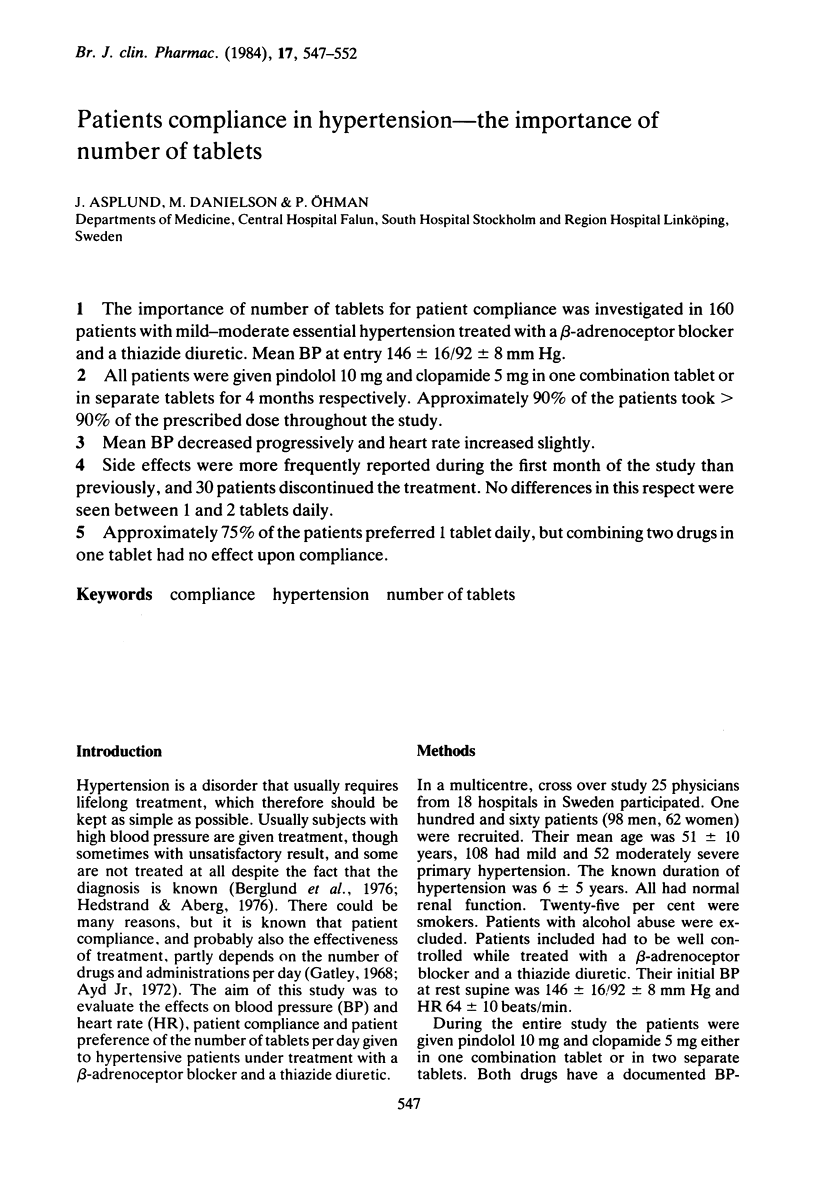
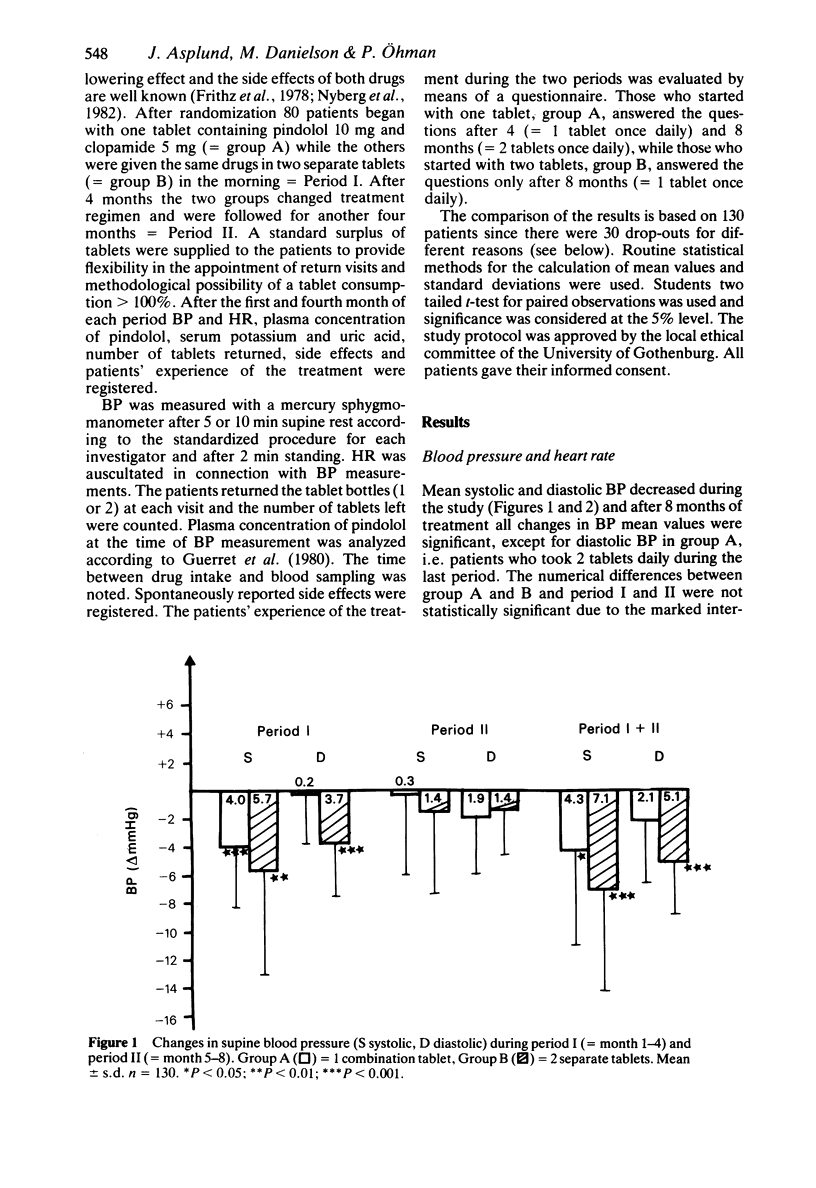
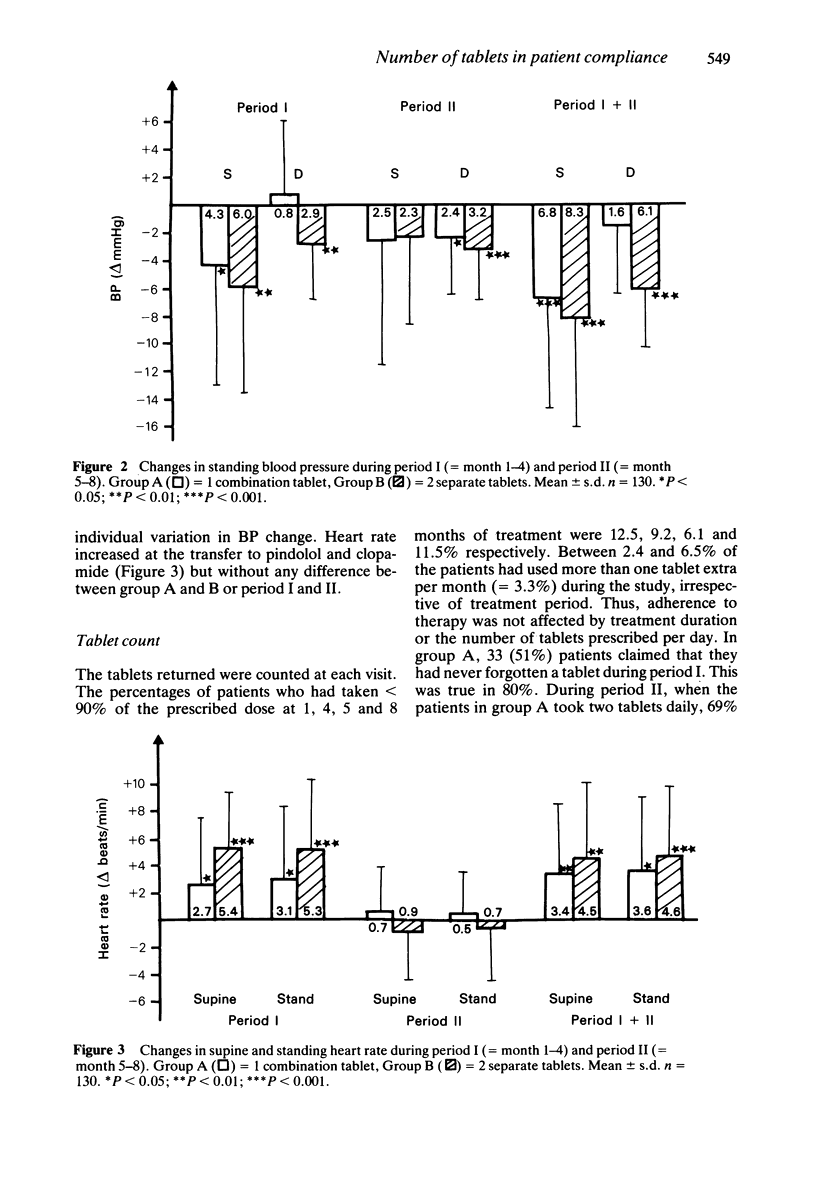
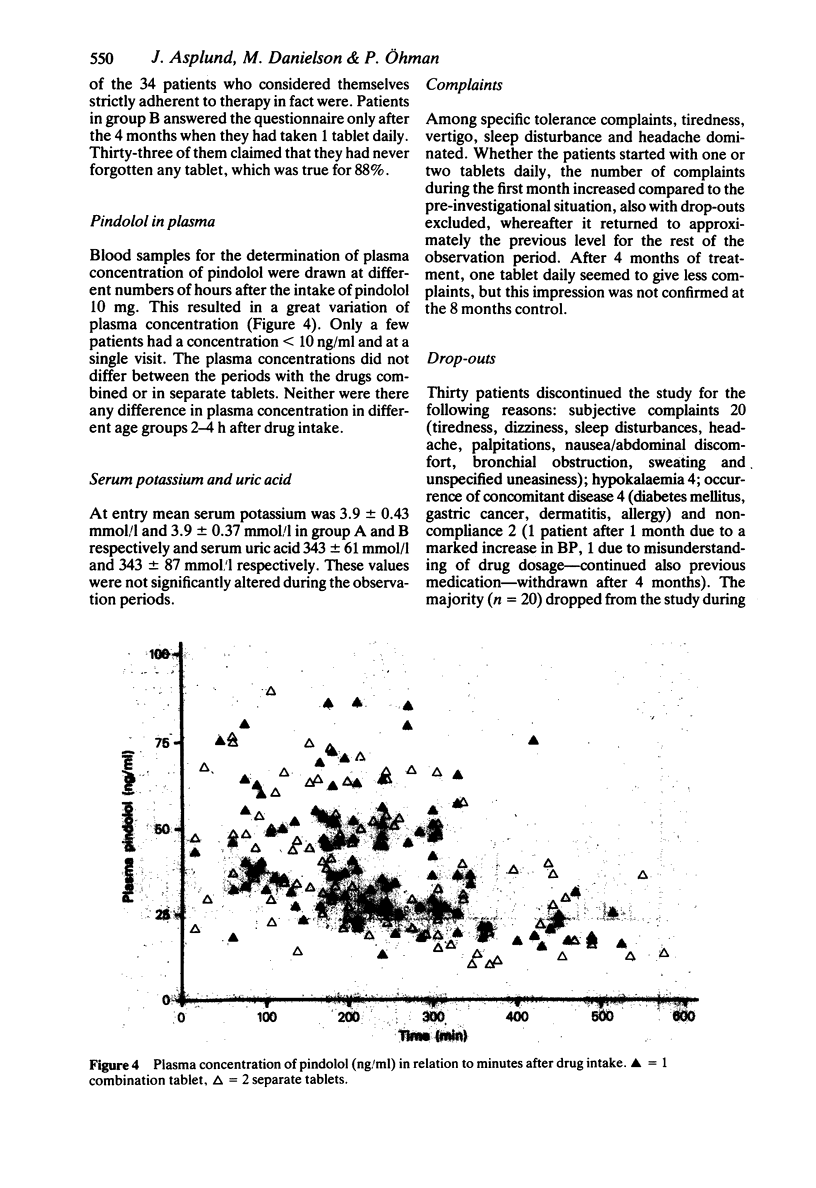

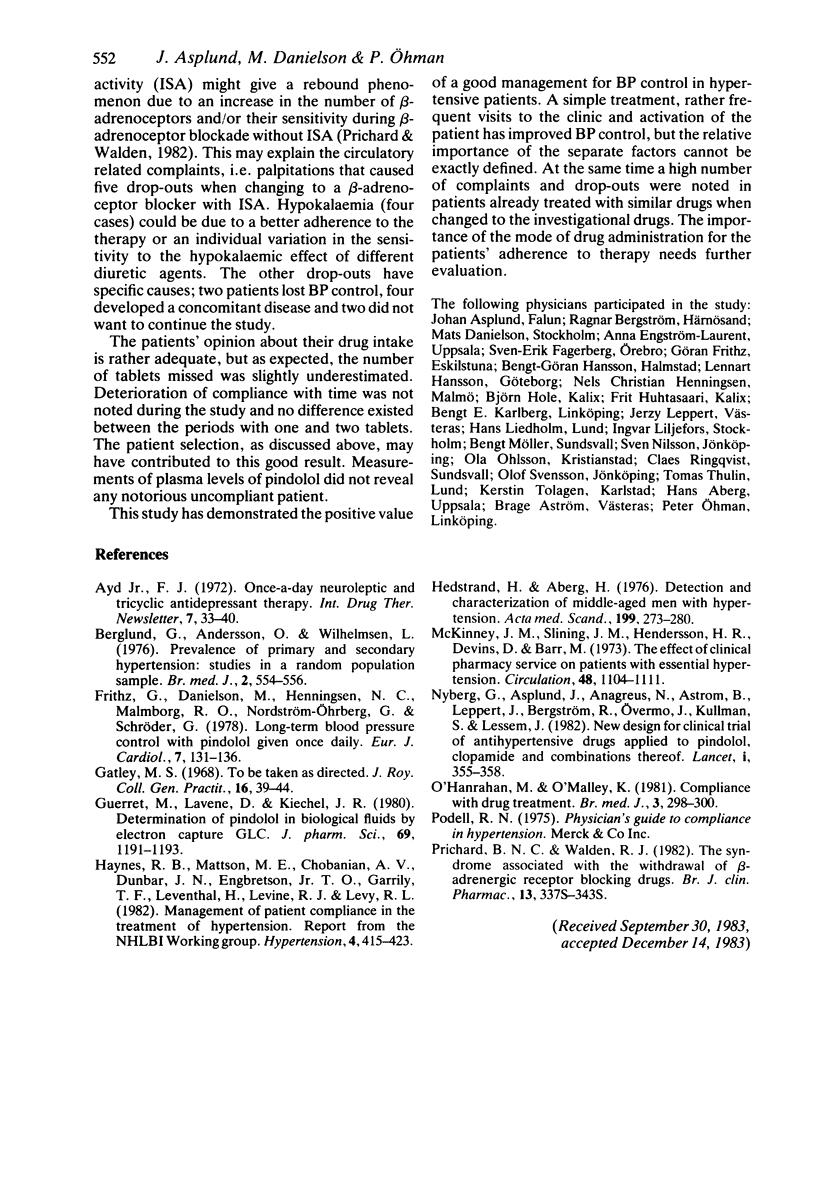
Selected References
These references are in PubMed. This may not be the complete list of references from this article.
- Berglund G., Andersson O., Wilhelmsen L. Prevalence of primary and secondary hypertension: studies in a random population sample. Br Med J. 1976 Sep 4;2(6035):554–556. doi: 10.1136/bmj.2.6035.554. [DOI] [PMC free article] [PubMed] [Google Scholar]
- Frithz G., Danielson M., Henningsen N., Malmborg R. O., Nordström-Ohrberg G., Schröder G. Long-term blood pressure control with pindolol given once daily. Eur J Cardiol. 1978 Apr-May;7(2-3):131–136. [PubMed] [Google Scholar]
- Gatley M. S. To be taken as directed. J R Coll Gen Pract. 1968 Jul;16(1):39–44. [PMC free article] [PubMed] [Google Scholar]
- Guerret M., Lavene D., Kiechel J. R. Determination of pindolol in biological fluids by electron-capture GLC. J Pharm Sci. 1980 Oct;69(10):1191–1193. doi: 10.1002/jps.2600691019. [DOI] [PubMed] [Google Scholar]
- Hedstrand H., Aberg H. Detection and characterization of middle-aged men with hypertension. Acta Med Scand. 1976;199(4):273–280. doi: 10.1111/j.0954-6820.1976.tb06732.x. [DOI] [PubMed] [Google Scholar]
- McKenney J. M., Slining J. M., Henderson H. R., Devins D., Barr M. The effect of clinical pharmacy services on patients with essential hypertension. Circulation. 1973 Nov;48(5):1104–1111. doi: 10.1161/01.cir.48.5.1104. [DOI] [PubMed] [Google Scholar]
- Nyberg G., Asplund J., Anagreus N., Aström B., Leppert J., Bergström R., Overmo J., Kullman S., Lessem J. New design for clinical trial of antihypertensive drugs applied to pindolol, clopamide, and combinations thereof. Lancet. 1982 Feb 13;1(8268):355–358. doi: 10.1016/s0140-6736(82)91390-3. [DOI] [PubMed] [Google Scholar]
- O'Hanrahan M., O'Malley K. Compliance with drug treatment. Br Med J (Clin Res Ed) 1981 Jul 25;283(6286):298–300. doi: 10.1136/bmj.283.6286.298. [DOI] [PMC free article] [PubMed] [Google Scholar]
- Prichard B. N., Walden R. J. The syndrome associated with the withdrawal of beta-adrenergic receptor blocking drugs. Br J Clin Pharmacol. 1982;13(Suppl 2):337S–343S. doi: 10.1111/j.1365-2125.1982.tb01938.x. [DOI] [PMC free article] [PubMed] [Google Scholar]


